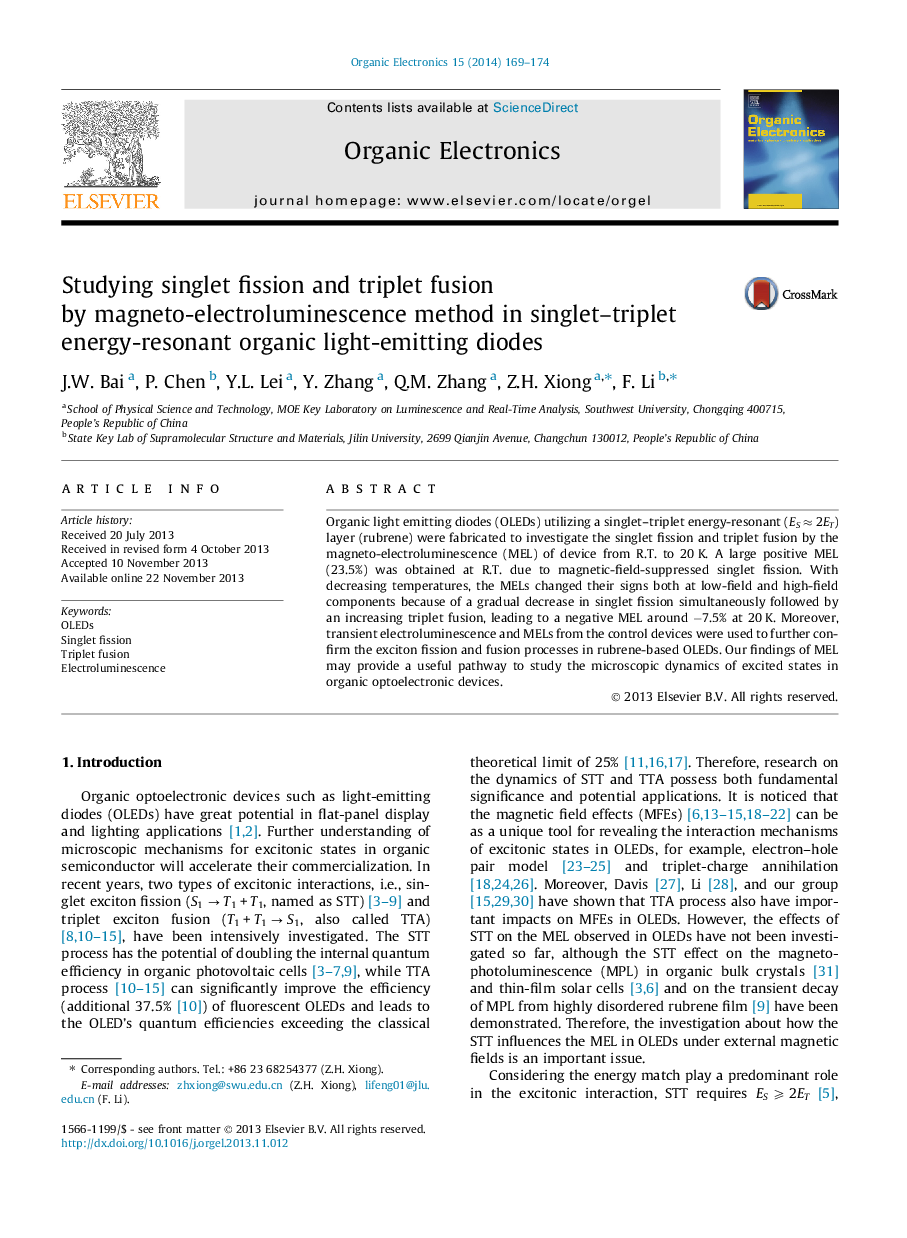| Article ID | Journal | Published Year | Pages | File Type |
|---|---|---|---|---|
| 1263867 | Organic Electronics | 2014 | 6 Pages |
•A large positive MEL (23.5%) was obtained at R.T.•The MELs changed their signs both at low-field and high-field components.•The singlet fission and triplet fusion are coexisted in rubrene.•Relative contribution of singlet fission and triplet fusion on MEL changes with decreasing temperature.
Organic light emitting diodes (OLEDs) utilizing a singlet–triplet energy-resonant (ES ≈ 2ET) layer (rubrene) were fabricated to investigate the singlet fission and triplet fusion by the magneto-electroluminescence (MEL) of device from R.T. to 20 K. A large positive MEL (23.5%) was obtained at R.T. due to magnetic-field-suppressed singlet fission. With decreasing temperatures, the MELs changed their signs both at low-field and high-field components because of a gradual decrease in singlet fission simultaneously followed by an increasing triplet fusion, leading to a negative MEL around −7.5% at 20 K. Moreover, transient electroluminescence and MELs from the control devices were used to further confirm the exciton fission and fusion processes in rubrene-based OLEDs. Our findings of MEL may provide a useful pathway to study the microscopic dynamics of excited states in organic optoelectronic devices.
Graphical abstractFigure optionsDownload full-size imageDownload as PowerPoint slide
